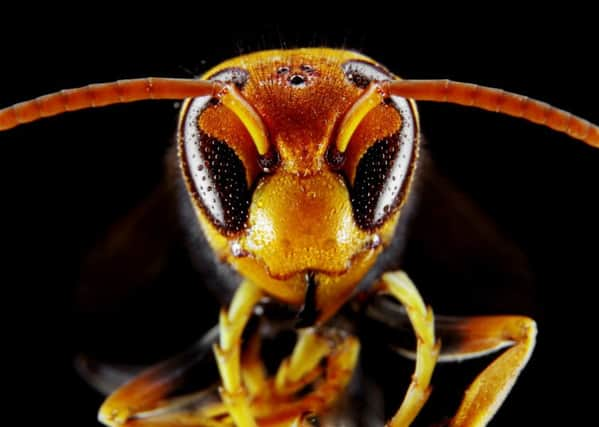Asian Hornets confirmed in the UK for the first time


Experts say the massive Asian Hornet was discovered in the Tetbury area of Gloucestershire. There have been previous unconfirmed signtings across the south, including in Hampshire, but this is the first confirmed arrival of the insects.
Although the insects pose no greater risk to human health they do pose a risk to honey bees.
Advertisement
Hide AdAdvertisement
Hide AdA hornet was found in Tetbury near Prince Charles’ Highgrove Estate which produces its own honey.
The sighting has now been confirmed by the National Bee Unit. Work is already underway to identify, destroy and remove any nests and specialist hornet-killing squads armed with infrared cameras and special pesticides have been sent to the area.
A local control centre will be opened tomorrow near Tetbury and bee inspectors from around England will be closely monitoring a three-mile radius around the sighting.
They will be supported by nest disposal experts who will use an approved pesticide to destroy any hornets and remove any nests.
Advertisement
Hide AdAdvertisement
Hide AdThe hornet found in Tetbury is currently undergoing DNA testing at the National Bee Unit in North Yorkshire to help establish how it arrived in the UK.
Nicola Spence, Defra Deputy Director for Plant and Bee Health, said: “We have been anticipating the arrival of the Asian hornet for some years and have a well-established protocol in place to eradicate them and control any potential spread.
“It is important to remember they pose no greater risk to human health than a bee, though we recognise the damage they can cause to honey bee colonies. That’s why we are taking swift and robust action to identify and destroy any nests.
“We remain vigilant across the country, working closely with the National Bee Unit and their nationwide network of bee inspectors.”
Advertisement
Hide AdAdvertisement
Hide AdThe hornet arrived in France in 2004 and is now common across large areas of Europe. It was discovered for the first time in Jersey and Alderney this summer.
It is believed the species will not be able survive in the north of the UK due to colder winters.